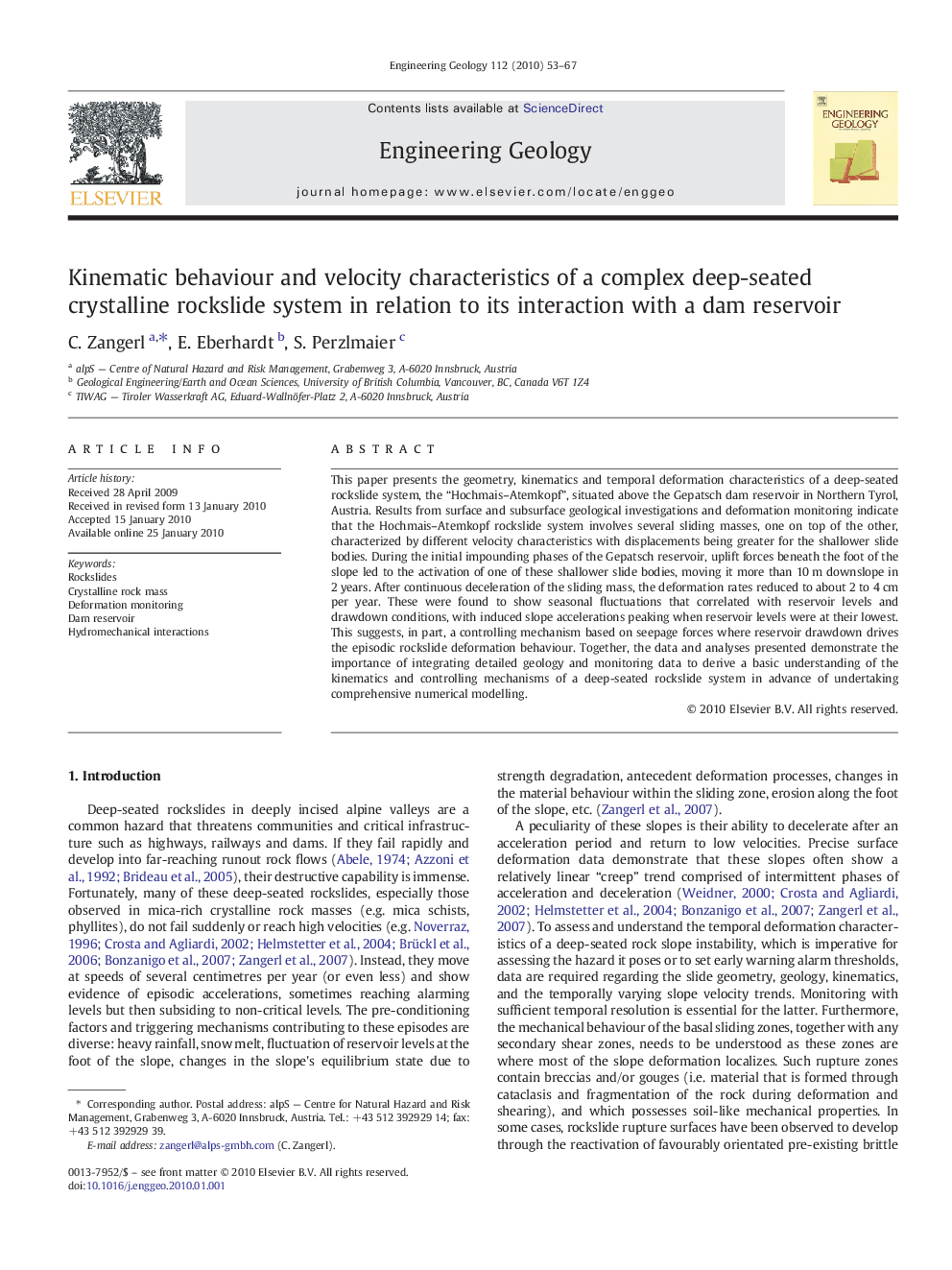| Article ID | Journal | Published Year | Pages | File Type |
|---|---|---|---|---|
| 4744455 | Engineering Geology | 2010 | 15 Pages |
This paper presents the geometry, kinematics and temporal deformation characteristics of a deep-seated rockslide system, the “Hochmais–Atemkopf”, situated above the Gepatsch dam reservoir in Northern Tyrol, Austria. Results from surface and subsurface geological investigations and deformation monitoring indicate that the Hochmais–Atemkopf rockslide system involves several sliding masses, one on top of the other, characterized by different velocity characteristics with displacements being greater for the shallower slide bodies. During the initial impounding phases of the Gepatsch reservoir, uplift forces beneath the foot of the slope led to the activation of one of these shallower slide bodies, moving it more than 10 m downslope in 2 years. After continuous deceleration of the sliding mass, the deformation rates reduced to about 2 to 4 cm per year. These were found to show seasonal fluctuations that correlated with reservoir levels and drawdown conditions, with induced slope accelerations peaking when reservoir levels were at their lowest. This suggests, in part, a controlling mechanism based on seepage forces where reservoir drawdown drives the episodic rockslide deformation behaviour. Together, the data and analyses presented demonstrate the importance of integrating detailed geology and monitoring data to derive a basic understanding of the kinematics and controlling mechanisms of a deep-seated rockslide system in advance of undertaking comprehensive numerical modelling.
